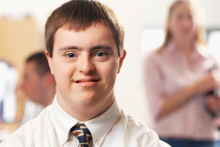Omar Honored as 'Unsung Hero' for Helping Youth in Kentucky and Beyond
Research Experiences for Undergraduates (REU) Information Session
Are you interested in getting paid to conduct research over the summer?
Join the Office of External Scholarships on Wednesday, November 13 at 6:00 p.m.in 313 Funkhouser as we discuss Research Experiences for Undergraduates (REU).
Scott Named Director at Kentucky Office of Rural Health
HHS awards Affordable Care Act Funds to Expand Access to Care
Funding supports new primary care sites in 236 communities to serve more than 1.25 million additional patients
Press release from Health and Human Services, November 7, 2013
The U.S. Health and Human Services (HHS) Secretary Kathleen Sebelius today announced $150 million in awards under the Affordable Care Act to support 236 new health center sites across the country. These investments will help care for approximately 1.25 million additional patients.
Innovative Biobank Will Enhance Research Capacity for Biomedical Investigators
Alzheimer’s Association and Global Down Syndrome Foundation Explore Links Between Alzheimer’s, Down Syndrome
Residents receive their first lead aprons
First Year Radiology Residents received their first lead aprons recently. A service provided by the Department, the Residents receive personalized lead aprons and safety glasses. Custom fitted for each individual, lead aprons and safety glasses are valuable and necessary equipment for Radiologists.
Committed to superior patient care
The Department of Radiology works to provide cutting-edge diagnostic imaging techniques and advanced interventional radiological therapies, a result of out strong clinical, educational and research programs.


